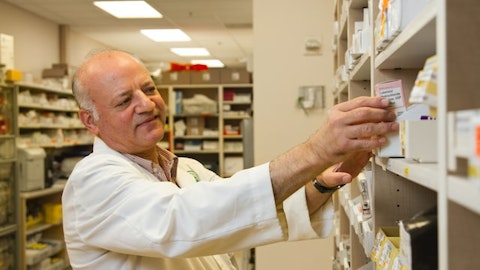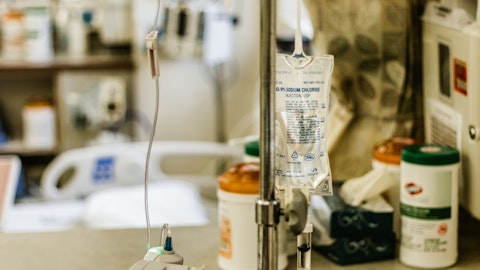James Molloy: Hey, guys, thank you for taking my questions. I had a question on — again, I presume a good data and ultimate FDA approval. Can you — want to — walk through a little bit, the opportunity to potentially taking from heparin or citrate, and obviously, there’s a lot of people out there know anticoagulant citrate is — we’re going to be trying to grab from as well. Is there an opportunity to try to take from the 43% of heparin as well?
Vince Angotti: Yeah. So you know that it is considered often as standard of care. One thing I’ll ask Pam to do quickly is — and then we’ll address that question with further is maybe you can comment, Pam, on what is considered standard of care at many of these clinical sites that are involved in the trial, to give them some type of flavour.
Pam Palmer: Yeah. I think that 43% that James mentioned, it comes from our quantitative market research, where we asked 150 physicians, about were nephrologists and half were critical care specialists, what is the current state of the art with anticoagulation relates to CRRT. And 43% said — 43% of the patients are getting heparin, and the rest of it, the other 60% is split evenly between getting no anticoagulant or getting citrate. And so each of these sites that we’re actually enrolling in the study, there is no United States sort of standard of care. They are sort of all over the map and they will admit that. We’ve got sites that don’t use any anticoagulation at all, we have sites that are only using citrate, we have sites that are only using heparin or nothing.
And it’s — so it’s really interesting how when you don’t have good options, you have a very fractured approach to clinical protocols. So we’re really hoping with nafamostat to streamline that and finally give them a good option that they can use in many patients. So I think we’ll be pulling mainly from the — commercially, we’ll be looking at folks who aren’t using anything or using citrate and we will break into that market. But I actually believe that there’s many folks that are getting — they are using heparin in patients they otherwise don’t think it’s a really good option, and I think we could also erode into that as well.
Vince Angotti: So when we have communicated commentary about our potential peak sales, the bulk of that is really coming from citrate and no anticoagulation. So anything we generate from those patients that are — where the site is utilizing heparin at risk, because they’re either ill-equipped use citrate and don’t want to not anticoagulated. We think that there’s opportunity to get that, but that has not really been a significant or were any part of our projections to date. So that would certainly be upside.
James Molloy: All right, thank you for that. I think you guys talked a little bit about the potential to go into the intermittent hemodialysis market. Just talk a little bit, has your thinking evolved on that at all? Is there an opportunity there to go into that space beyond the continuous?
Pam Palmer: Yeah, it’s next circuit. It’s got the same problem that CRRT has, blood hits a foreign object and starts to clot. And there’s not any really good options for that as well. The patients with intermittent hemodialysis tend to not be as sick as the folks who require continuous renal replacement therapy. So many more of them can tolerate heparin. So that’s why it was not as big a market as far as the percentage, but the actual denominator is much larger than CRRT. So that is something that would benefit from nafamostat as well. And we’ve just got to make sure that we’re blocking and tackling and all the —
Vince Angotti: Hey, Jim. I’m going to circle back to the previous segment of that question as well, where you asked, in particular, on CRRT, is there an opportunity potentially to take any of that market share away from heparin. I think it’s important to understand that — and Dr. Palmer, you can comment on this, when patients or I’m sorry, the sites that are going to use the nafamostat, can you clarify, is there any new training or difference relative to what they typically do with heparin when they utilize nafamostat?




